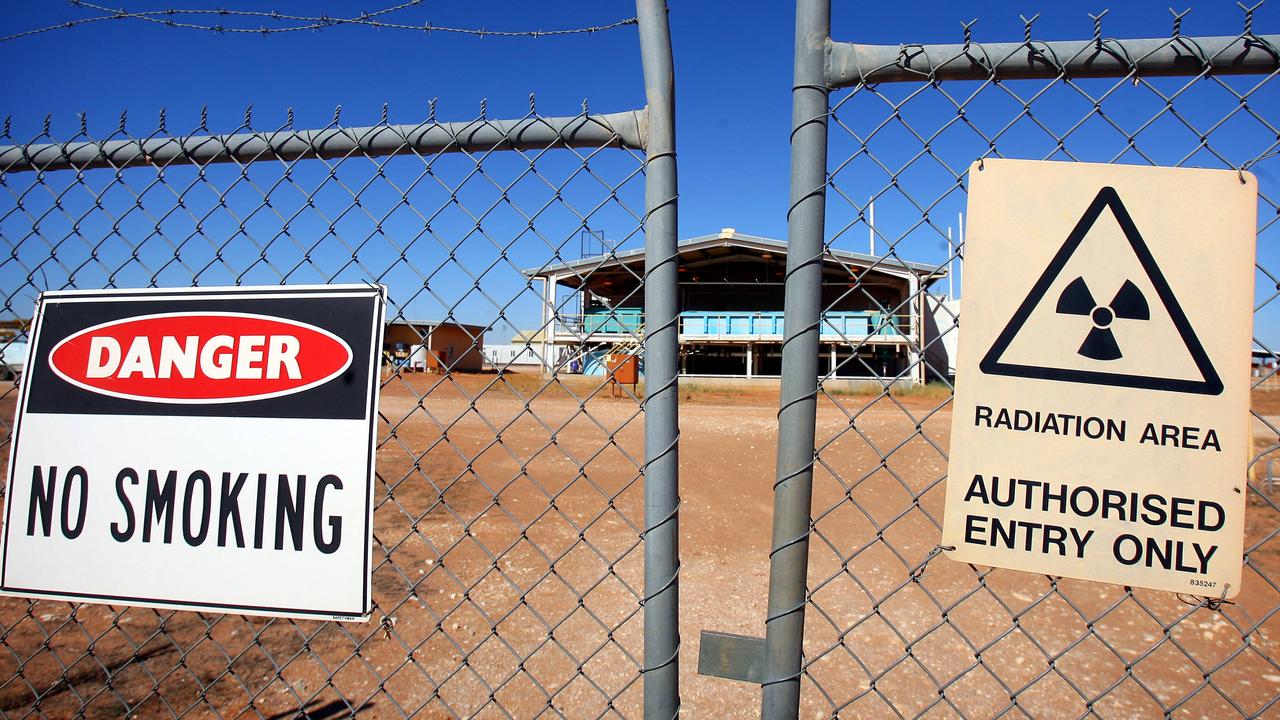Nuclear power resurgence predicted
Anxiety over nuclear energy may take a back seat to tackling climate change, a mining executive predicts, tipping a major uranium market recovery.
The uranium industry is “on the cusp of recovery” after a long period of post-Fukushima depression, a mining executive says, predicting prices could “go ballistic” as the world re-embraces nuclear power in the push to mitigate climate change.
Boss Energy chief executive Duncan Craib told the Diggers & Dealers conference in Western Australia on Wednesday there was “a hell of lot of activity going on off-market” and predicted uranium oxide prices would rebound strongly, with the spot price sitting at $US32.50 per pound currently, up from below $US28/lb in March.
The company holds the Honeymoon mine northwest of Broken Hill in South Australia, which was mothballed in 2014 when uranium prices had tanked in the wake of the 2011 disaster in Japan.
Boss says Honeymoon is one of a few advanced uranium projects ready to take advantage of market improvement, with export permitting renewed in 2019 and an existing solvent extraction plant that can get going within 12 months following a decision to mine.
There are only two uranium mines operating in Australia following the closure of Ranger in the Northern Territory in January – Olympic Dam and Beverley, also in South Australia.
“Honeymoon is destined to be the third and by that, Australia’s next uranium producer and one of the first worldwide to come back into production,” Mr Craib told delegates.
“There is something happening right now in the uranium market.
“Over the coming months, we expect to see the spot price continue to increase in value and utilities to enter more into contracting … prices have gone and can go ballistic.
“The past six months have been absolutely transformational for the industry and one of the key drivers … is the increasing recognition of climate change and how nuclear can sort of mitigate that climate change through its reduction in carbon emissions.
“We’re seeing legislation being codified in some of the most developed world, with the US, the UK, South Korea and Japan all committing to carbon-free emissions by 2050 and China, for that matter, by 2060.”
He said industry analysts and world governing bodies such as the World Nuclear Association had for many years called for new uranium mines, but the incentive price for producers was $US60/lb – the minimum needed bring new mines on.
“Since February, we’ve seen over $1bn worth of investment into uranium equities and that’s set to grow,” Mr Craib said.
“It would appear that the market’s quiet – why isn’t the spot price yet taking off?
“What I can report is that there is a lot a hell of a lot of activity going on off-market and right now, buyers are renegotiating contracts … and that, in our experience, is generally a precursor to more general contracting with which we’ll be entering into.
“We certainly expect to see more visible contracting as we go towards the end of the year, or possibly earlier if pricing starts to rise and looks sustainable.
“We believe that prices will rise to the mid $US30s to the high $US30s on a spot price level by the calendar year end.”
Mr Craib told NCA NewsWire that public anxiety over nuclear energy post-Fukushima had dissipated, particularly overseas.
“As a citizen, as a father, I’m really supportive of nuclear power,” he said.
It had a role to play alongside renewables, Mr Craib argued.
Uranium supply had fallen off a cliff along with prices and sentiment after the earthquake and tsunami-triggered disaster, with only a few mines worldwide remaining in production ever since, he said.
Paladin Energy chief executive Ian Purdy told the conference about the significant supply shortfall.
“The amount of uranium being mined does not meet consumption every day of the week,” Mr Purdy said.
“And that’s an undisputed fact.
“The industry has been living off stockpiles for a long period of time – those stockpiles are drying up.
“And we’re starting to see some activity where the utilities are moving back into the long-term market and they’re starting to take a view that they need to start locking in contracts.
“We’re expecting that momentum to pick up over the next few quarters.”
Mr Purdy said the company was focused on restarting its flagship Langer Heinrich mine in Namibia, which was put on care and maintenance in 2018 due to low uranium prices.
It was fully permitted and would displace 1.3 billion tonnes of carbon dioxide from the global electricity system, he said.
Paladin last year sold its 85 per cent interest in the Kayelekera uranium mine in Malawi, which had been mothballed since 2014, to Perth-based Lotus Resources.
It has also shed its burdensome debt.
“We have no debt – no debt whatsoever – and a very strong balance sheet to really take the company forward,” Mr Purdy said.
For all the latest business News Click Here

